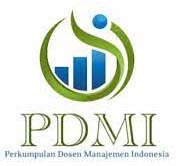WILLINGNESS TO PAY FOR CONSERVATION OF NATURAL RESOURCES IN SANTUBONG NATIONAL PARK
 :
:
https://doi.org/10.9744/jmk.19.1.16-21
Keywords:
Contingent valuation, national park, conservation, willingness to pay, Sarawak.Abstract
Gunung Santubong National Park (GSNP) is one of the attractions in Sarawak that needs attention forconservation. A contingent valuation method of survey was conducted to estimate the conservation value of
GSNP and to elicit the willingness to pay among respondents. Through the random survey, the estimated
mean of willingness to pay for conservation fee per respondent was RM8.41. With the number of visitors of
24066 in year 2016, it is estimated that there is an additional RM 202,395.06 that could be used for the
improvement in environmental conservation. This study shows that contingent valuation method is a useful
tool to guide decision makers in policy purposes of natural resources management of protected area in
developing countries.
References
Andrade, G. S. M. & Rhodes, J. R. (2012). Protected areas and local communities: An inevitable partnership toward successful conservation strategies? Ecology and Society, 17(4), 14. [CrossRef]
Cessford, G. & Burns, R. (2008). Monitoring visitor numbers in New Zealand national parks and protected areas. New Zealand: Science & Technical Publishing. [CrossRef]
Dumitras, D. E., Arion, F. H., & Merce, E. (2011). A brief economic assessment on the valuation of national and natural parks: The case of Romania. [CrossRef]
Notulea Botanicae Horti Agrobotanici Cluj Napoca, 39(1), 134–138. [CrossRef]
Eagles, P. F. (2002). Trends in park tourism: Economics, finance and management. Journal of Sustainable Tourism, 10(2), 132–153. [CrossRef]
Hearne, R. R. & Salinas, Z. M. (2002). The use of choice experiments in the analysis of tourist preferences for ecotourism development in Costa Rica. Environmental Management, 65(2), 153–163. [CrossRef]
Margules, C. R. & Pressey, R. L. (2000). Review article systematic conservation planning. Nature International Weekly Journal of Science, 405, 243–253. [CrossRef]
Markandya, A., Harou, P., Bellu L. G. & Cistulli, V. (2002). Environmental economics for sustainable growth. Cheltenham: Edward Elgar. [CrossRef]
McAlpine, K. G. & Wotton, D. M. (2007). Conservation and the delivery of ecosystem services. New Zealand: Publishing Team Department of Conservation. [CrossRef]
McKenzie, G. W. (1983). Measuring economic welfare: New methods. Cambridge: Cambridge University Press. [CrossRef]
Queensland. (2015). Nature conservation act 1992. [CrossRef]
Sarawak Forest Department. (2016). Visitor statistics to national park. Retrieved May 25, 2016, from Sarawak Forest Department: www.Forestry. Sarawak.Gov.My/Modules/Web/Page.Php?Id=1067 &Menu Id=0sub Id=291. [CrossRef]
United Nations Environment Programme. (2013). UNEP annual report 2013. [CrossRef]
Downloads
Published
How to Cite
Issue
Section
License
Authors who publish on this journal agree to the following terms:
- Authors retain copyright and grant the journal right of first publication with the work simultaneously licensed under a Creative Commons Attribution License that allows others to share the work with an acknowledgement of the work's authorship and initial publication in this journal.
- Authors are able to enter into separate, additional contractual arrangements for the non-exclusive distribution of the journal's published version of the work (e.g., post it to an institutional repository or publish it in a book), with an acknowledgement of its initial publication in this journal.
- Authors are permitted and encouraged to post their work online (e.g., in institutional repositories or on their website) prior to and during the submission process, as it can lead to productive exchanges, as well as earlier and greater citation of published work (See The Effect of Open Access).

















